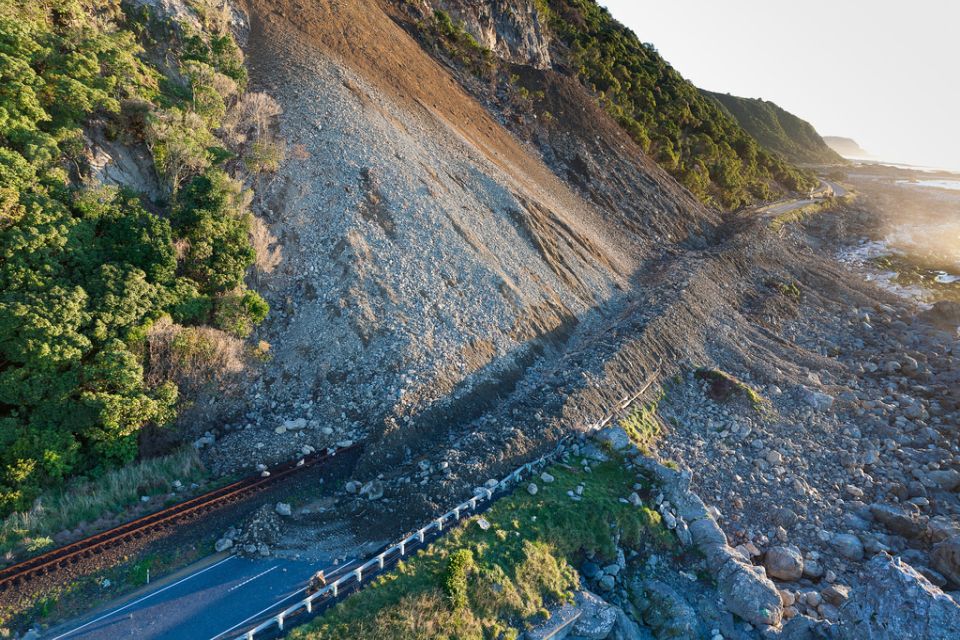NCTIR
The North Canterbury Transport Infrastructure Recovery alliance (NCTIR) was set-up to repair the road and railway between Picton and Christchurch. The top priority was to reopen SH1 and the Main North Line railway as soon as posssible.
A safe, durable road and rail line needed planning that had little impact on the environment, wildlife, and landscape. The difficult terrain, along with coastal and weather conditions, has been a big challenge.

State Highway 1 (SH1)
More than 200 areas of road along SH1 were affected by the earthquake. There were over 30 slips south of Kaikōura and nine large slips north of Kaikōura.
After a lot of hard work, SH1 north and south of Kaikōura reopened for daytime travel on 15 December 2017. It then reopened for night time travel on Monday 30 April 2018.
- Watch the following video that shows the people, effort, and challenges faced over the course of this road reconstruction: One year one month and one day - Celebrating SH1 reopening
- This “flythrough” will give you an idea of what this section of SH1 looks like now that it is open: Flythrough visualisation from Oaro to Clarence
A different Picton to Christchurch route
With SH1 closed after the earthquake, drivers between Christchurch and Picton had to drive a different route. Increased traffic along this route affected the road as well as local communities. New speed limits were set to improve safety for drivers and communities. The road was also improved so it could handle the extra traffic.

The Inland Road (Route 70) between Kaikōura and Waiau
Another priority was to restore access to communities which were cut off by earthquake damage. The inland road (Route 70) was the best way to restore access to Kaikōura.
The badly damaged road had to be made safe for general use. This included:
- clearing the road of more than 50 slips
- stabilising slopes
- repairing damage
- building a new road around the unstable Whalesback section.
Access through this route was restored within a few days of the earthquake. Emergency supplies were then able to get through to areas cut off by earthquake damage.
Main North Line railway
The Main North Line railway between Picton and Christchurch is important for moving freight and people between the North and South islands. Nearly 900 sites along this line were damaged. The line was buried under more than 90 slips and landslides. 59 bridges and 20 rail tunnels were also damaged.
10 months after the earthquake, some freight rail services were able to start again. This helped to reduce the number of trucks on the road and improve supply of goods to the area. Passenger trains won’t be running until mid-2018 at the earliest.
Commemorating the rebuild of the line with a sculpture
A sculpture has been made to remember the effort put in to rebuild the Main North Line. It also recognises the November 2016 earthquake and its effects on the wider community.
Caring for people
More than 1300 people from 100 organisations joined the rebuild effort. This included many people and businesses from Kaikōura and surrounding areas.
Keeping everyone informed has been an important part of this NCTIR project. Regular community meetings were held in the Kaikōura area. There were also ‘door-knocks’ in some neighbourhoods to discuss upcoming high-impact work.
A NCTIR office was opened on Kaikōura's main street. This was for residents and others wanting updates on the recovery work.
- You might like to check out The Bulletin which provides up-to-date information on progress.











